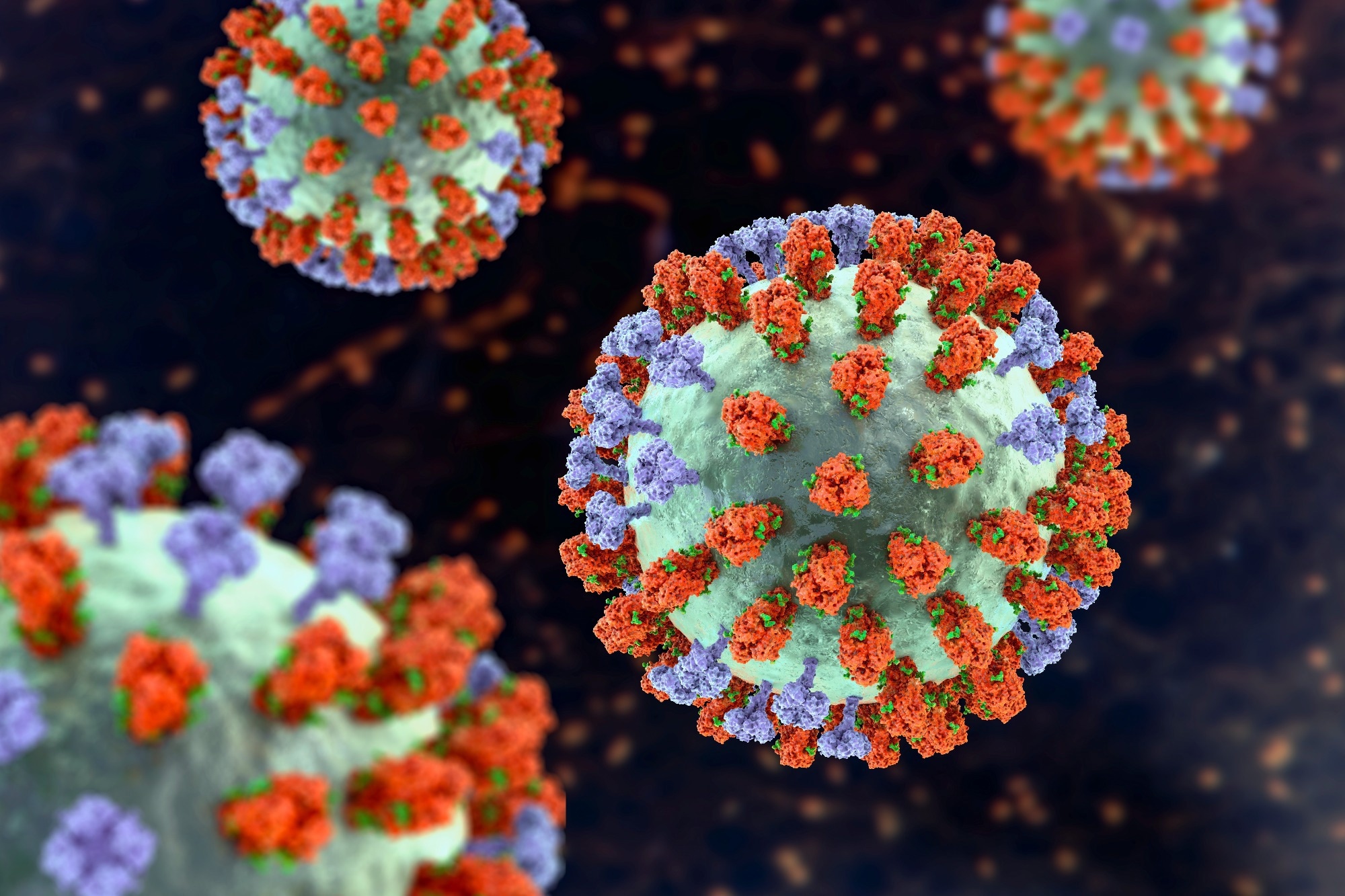In a recent study published in The Lancet Infectious Diseases, researchers evaluate the persistence of the severe acute respiratory syndrome coronavirus 2 (SARS-CoV-2) in tissues and its association with long coronavirus disease 2019 (COVID-19) symptoms.
 Study: The persistence of SARS-CoV-2 in tissues and its association with long COVID symptoms: a cross-sectional cohort study in China. Image Credit: Kateryna Kon / Shutterstock.com
Study: The persistence of SARS-CoV-2 in tissues and its association with long COVID symptoms: a cross-sectional cohort study in China. Image Credit: Kateryna Kon / Shutterstock.com
What causes long COVID?
Postmortem examinations of patients who have died due to COVID-19 have revealed the presence of SARS-CoV-2 in several organs, thus suggesting that this viral infection may lead to certain systemic diseases. Likewise, residual viral protein and nucleic acids have been identified in different sample types, even after recovering from COVID-19.
Between 6-68% of individuals who have recovered from COVID-19 experience persistent symptoms, including headache, fatigue, dyspnea, diarrhea, or loss of taste/smell, a condition known as long COVID. Previous studies have suggested that some long COVID symptoms may be associated with SARS-CoV-2 persistence in tissues. However, there remains a lack of large-scale studies examining viral persistence in tissues at different time points after COVID-19 recovery.
About the study
The present study examines SARS-CoV-2 persistence in tissues after COVID-19 recovery and its association with long COVID symptoms. Patients diagnosed with mild COVID-19 in December 2022 who were scheduled for chemotherapy, immunotherapy, and gastroscopy or hospitalized for other reasons at one, two, or four months following infection were included in the analysis. Samples from 13 tissues were collected at these time points.
RNA was extracted from samples, and digital droplet polymerase chain reaction (ddPCR) was performed with nucleoprotein (N1) and open reading frame 1ab (ORF1ab) primers. A quantitative reverse-transcription polymerase chain reaction (qRT-PCR) assay was also performed to measure the levels of transmembrane serine protease 2 (TMPRSS2) and angiotensin-converting enzyme 2 (ACE2) in tumor/para-tumor samples and compare its sensitivity with dddPCR.
Immunohistochemistry, immunofluorescence, and RNA in situ hybridization assays were performed to validate ddPCR accuracy. Transcriptome sequencing of lung and vascular tissues was also performed to examine the effects of viral presence on host gene transcription. A multivariate logistic regression analysis explored the associations between SARS-CoV-2 persistence and long COVID symptoms.
Study findings
Of the 238 enrolled patients, 225 were eligible for sample collection, 213 of whom completed the questionnaire at four months. A total of 72 patients reported experiencing at least one symptom four months following recovery from COVID-19. The average age of these patients was 52.3, whereas those without symptoms had an average age of 55.
Most patients were vaccinated with three doses before being diagnosed with COVID-19. Overall, 317 tissue specimens were obtained, 53, 198, and 66 of which were collected one, two, and four months after recovering from COVID-19, respectively. No association between viral presence in throat swabs and gastric mucosa was observed, thus implying no contamination from oral/nasal sampling during gastroscopy.
The proportion of tissues that tested positive for viral RNA on ddPCR declined over time. Comparatively, viral subgenomic RNA was detected in 8%, 15%, and 2% of solid tissue samples at one, two, and four months, respectively.
N1 and ORF1ab RNA were found in the thyroid, skin, lung, breast, brain, liver, intestine, stomach, blood vessels, and kidney tissues. Subgenomic RNA was also identified in 44% of samples positive for ORF1ab or N1.
The viral RNA detection rate was not significantly different between tumor and para-tumor tissues. Furthermore, there were no significant differences in transcript levels of ACE2 and TMPRSS2 between these tissues.
Seventy-four tissue samples were subject to qRT-PCR; only one with the highest copy number on ddPCR tested positive for SARS-CoV-2. Viral sequencing classified the variant as BA.5.2, the dominant circulating strain when the study was conducted.
Moreover, ddPCR was found to be about 100 times more sensitive than qRT-PCR with the N1 primer. DdPCR is also more sensitive and reliable than immunohistochemistry, immunofluorescence, and RNA in situ hybridization.
Long COVID-19 symptoms at four months included fatigue, palpitations, chest pain, sleeping difficulties, dyspnea, diarrhea, nausea, joint pain, abdominal pain, myalgia, dizziness, and reduced appetite, among others. Viral persistence at any time after recovering from infection was significantly associated with these symptoms.
Transcriptome sequencing was performed on 24 lung and 11 blood vessel specimens. In lung specimens, innate/adaptive immunity and zinc finger protein-related genes were downregulated. In contrast, genes involved in cholesterol metabolism and the complement and coagulation pathways were downregulated in blood vessel samples.
Conclusions
The persistence of SARS-CoV-2 RNA in tissues from multiple organs was observed at several time points following COVID-19 recovery. Nevertheless, viral detection was markedly lower at four months, thus suggesting a slow but adequate viral clearance.
Journal reference:
- Zuo, W., He, D., Liang, C., et al. (2024). The persistence of SARS-CoV-2 in tissues and its association with long COVID symptoms: a cross-sectional cohort study in China. The Lancet Infectious Diseases. doi10.1016/S1473-3099(24)00171-3